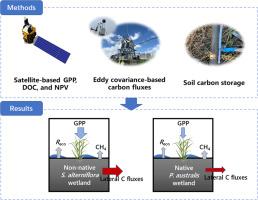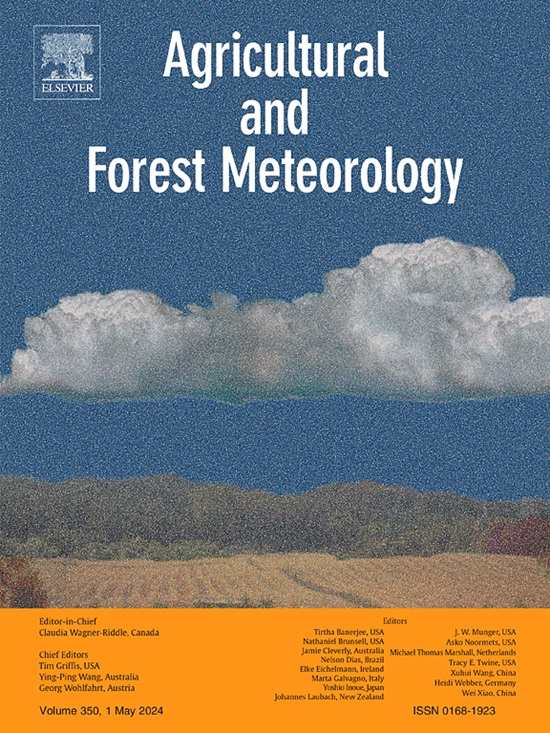Impacts of Spartina alterniflora invasion on coastal carbon cycling within a native Phragmites australis-dominated wetland
IF 5.6
1区 农林科学
Q1 AGRONOMY
引用次数: 0
Abstract
Despite its significance for climate adaptation, the impact of non-native Spartina alterniflora on coastal blue carbon cycling remains unclear. While it is generally reported that S. alterniflora invasion increases the soil organic carbon (SOC) stock along China's coastlines from tropical to subtropical climate zones, some cases, such as the Jiuduansha wetland in the Yangtze River estuary, show a different pattern. To clarify the impacts of S. alterniflora invasion on carbon cycling within a native Phragmites australis-dominated wetland, a comprehensive study was conducted in the Yangtze River estuary, employing a multidisciplinary approach that integrated eddy covariance (EC) measurements, soil and water sampling, and satellite remote sensing. The EC measurements revealed that three marshes (S. alterniflora saltmarsh, native Phragmites australis saltmarsh, and P. australis freshwater marsh) functioned as net carbon sinks annually, with S. alterniflora saltmarsh capturing 822.57 g C m−2 yr−1, which was 86.13 % and 54.27 % higher than P. australis saltmarsh (NEE=−441.93 g C m−2 yr−1) and P. australis freshwater marsh (NEE=−533.21 g C m−2 yr−1), respectively. This suggests that enhanced lateral carbon fluxes from the wetland to the estuary underlie the higher primary production but lower SOC storage observed in S. alterniflora wetlands. This possibility is further supported by higher satellite-derived dissolved organic carbon concentrations in the tidal creeks adjacent to S. alterniflora compared to those near P. australis marshes, which were significantly correlated with satellite-derived non-photosynthetic vegetation fractional cover. This study underscores the role of non-native S. alterniflora in facilitating carbon transfer from the atmosphere to the estuary, in contrast to native P. australis, and highlights that effective S. alterniflora management is beneficial for the synergistic enhancement of wetland restoration, conservation, and carbon sequestration.


求助全文
约1分钟内获得全文
求助全文
来源期刊
CiteScore
10.30
自引率
9.70%
发文量
415
审稿时长
69 days
期刊介绍:
Agricultural and Forest Meteorology is an international journal for the publication of original articles and reviews on the inter-relationship between meteorology, agriculture, forestry, and natural ecosystems. Emphasis is on basic and applied scientific research relevant to practical problems in the field of plant and soil sciences, ecology and biogeochemistry as affected by weather as well as climate variability and change. Theoretical models should be tested against experimental data. Articles must appeal to an international audience. Special issues devoted to single topics are also published.
Typical topics include canopy micrometeorology (e.g. canopy radiation transfer, turbulence near the ground, evapotranspiration, energy balance, fluxes of trace gases), micrometeorological instrumentation (e.g., sensors for trace gases, flux measurement instruments, radiation measurement techniques), aerobiology (e.g. the dispersion of pollen, spores, insects and pesticides), biometeorology (e.g. the effect of weather and climate on plant distribution, crop yield, water-use efficiency, and plant phenology), forest-fire/weather interactions, and feedbacks from vegetation to weather and the climate system.

 求助内容:
求助内容: 应助结果提醒方式:
应助结果提醒方式:


